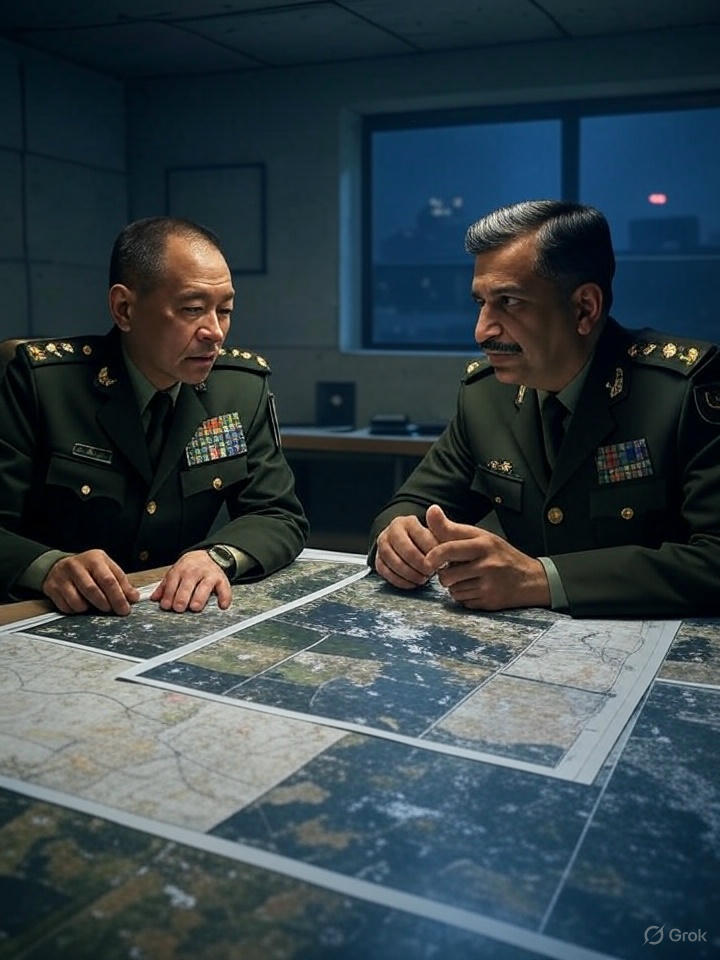Operation Sindoor: India Fought a Two-Front War with China and Pakistan

In the shadow of South Asia’s most intense confrontation in decades, new revelations suggest China’s covert support to Pakistan played a more critical role in the recent India-Pakistan conflict of 2025 than previously acknowledged. A leading Indian defence think tank, the Centre for Joint Warfare Studies (CENJOWS), has reported that China not only backed Pakistan with military hardware but actively provided air defence coordination, radar reorganization, and satellite coverage enhancements.
These developments come amid the fallout from the April 22 terrorist attack in Pahalgam, Kashmir, which claimed the lives of 26 individuals, most of whom were Hindu tourists. India quickly attributed the assault to Pakistan-sponsored terrorism, whereas Islamabad denied any role, instead calling for an international inquiry—an offer New Delhi swiftly rejected.
In the wake of the attack, bilateral ties deteriorated sharply. India enacted punitive measures, including suspension of the Indus Waters Treaty, closure of cross-border transit routes, and expulsion of Pakistani diplomats. Pakistan retaliated by suspending the Simla Agreement, shutting down its airspace for Indian flights, and ending trade and diplomatic ties.
From April 24 to May 6, intermittent cross-border shelling occurred, followed by India’s launch of Operation Sindoor on May 7. These missile strikes, which India claimed were aimed at militant bases of Jaish-e-Mohammed and Lashkar-e-Taiba, were described by Pakistan as indiscriminate and targeting civilian infrastructure. A ceasefire, brokered on May 10, has since held with relative calm.
However, it’s the strategic implications of Chinese involvement that are now sparking concern within India’s defence circles. Ashok Kumar, Director General of CENJOWS, disclosed that China provided Pakistan with technical assistance that went far beyond weapon supply. “They helped reorganise Pakistan’s air defence systems and radar networks,” Kumar said, noting that this significantly enhanced Islamabad’s ability to monitor Indian troop deployments.
More strikingly, China is also said to have enabled real-time satellite coverage over Indian military zones, allowing Pakistan to maintain an upper hand during the escalation period. “This sort of China-Pakistan military cooperation reflects a new level of tactical synergy,” Kumar noted.
The performance of Chinese military systems was also under scrutiny. According to Kumar, China may have used the conflict as a live testing ground for platforms such as the J-10C fighter jet and the PL-15 air-to-air missile. While these systems were deployed, their performance was reportedly “below average,” with some instances of failure as assessed by Indian defence analysts.
India’s air defence systems, on the other hand, reportedly performed well against the swarm of drones deployed by Pakistan, thanks to what Kumar described as an “integrated network of censors and sensors.”
Strategically, the episode reinforces India’s fear of a two-front war. “In our current strategic planning, we now always factor in the possibility of simultaneous aggression by Pakistan and China,” said Kumar. He added, “Anything possessed by China today could well be made available to Pakistan tomorrow.”
These concerns are not new. The China-Pakistan defence partnership has long roots, extending back to the Cold War. In recent years, it has deepened further through the Belt and Road Initiative (BRI), with China investing billions in infrastructure and military exchanges with Islamabad.
CENJOWS, which reported these developments, is an autonomous body under India’s Ministry of Defence, known for its expert assessments and military insight. Its board includes top-level defence officials, including the Defence Minister and the chiefs of the armed services.
Despite the weight of these claims, official responses remain muted. Neither China nor Pakistan has addressed the allegations publicly, and India’s Ministries of Foreign Affairs and Defence have also remained silent. This leaves Kumar’s insights as the most detailed public account of China’s military role in the 2025 India-Pakistan border clash.
As regional dynamics shift, the emerging India-China-Pakistan triangle poses complex challenges to peace and stability in South Asia. If these allegations hold true, it may well prompt a recalibration of Indian defence strategy, not just toward Pakistan, but increasingly toward countering a broader, coordinated threat emanating from both its nuclear-armed neighbours.